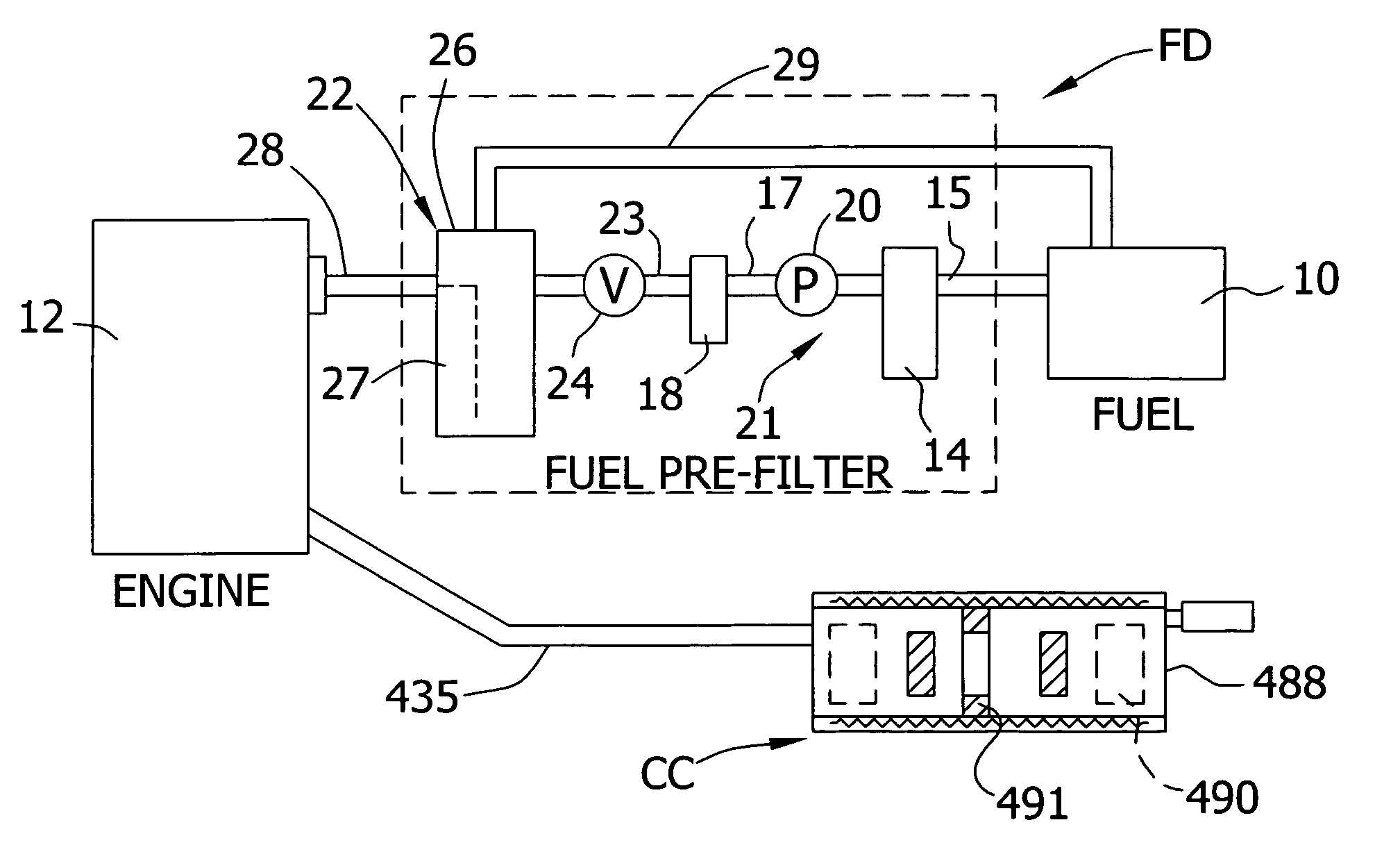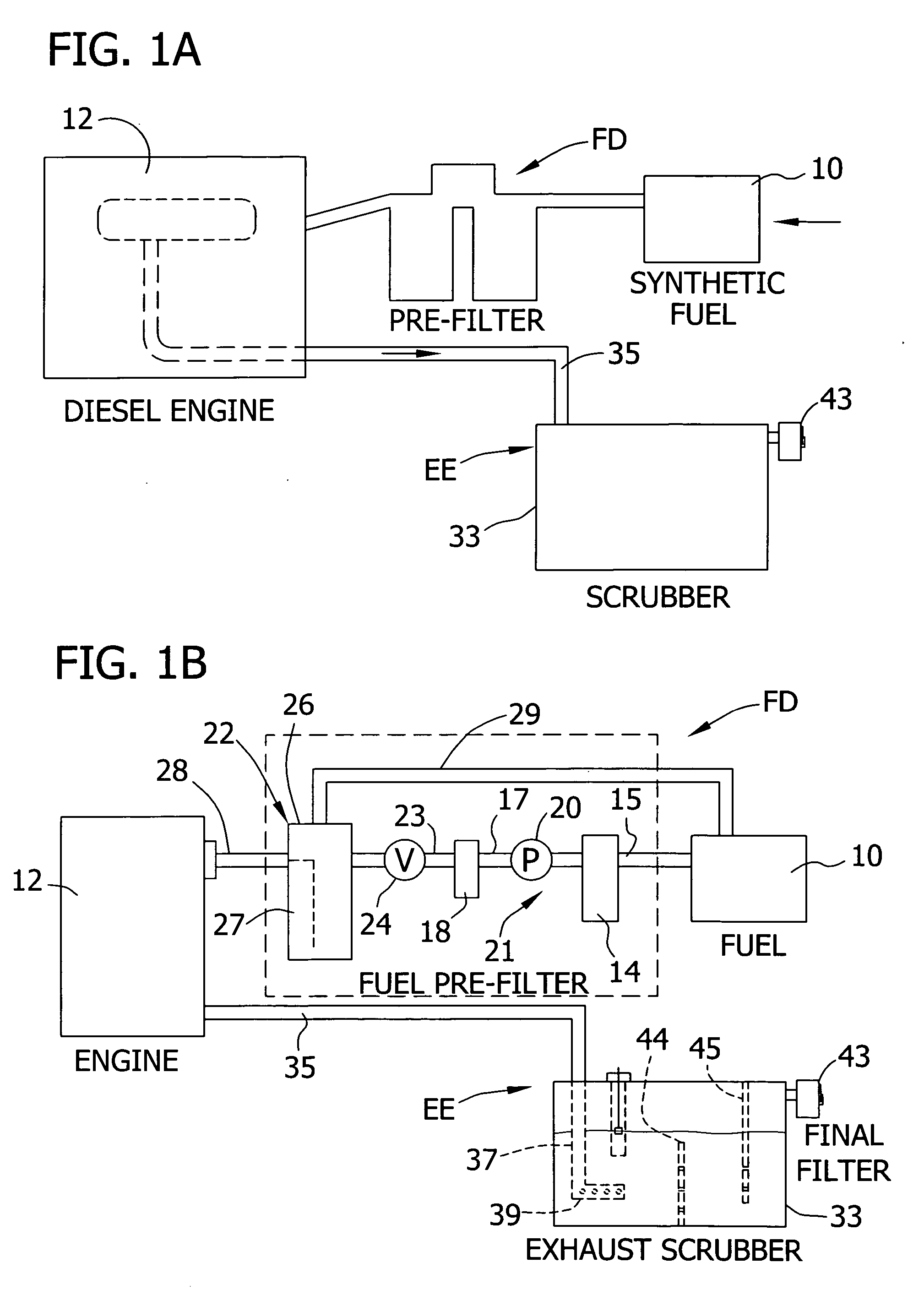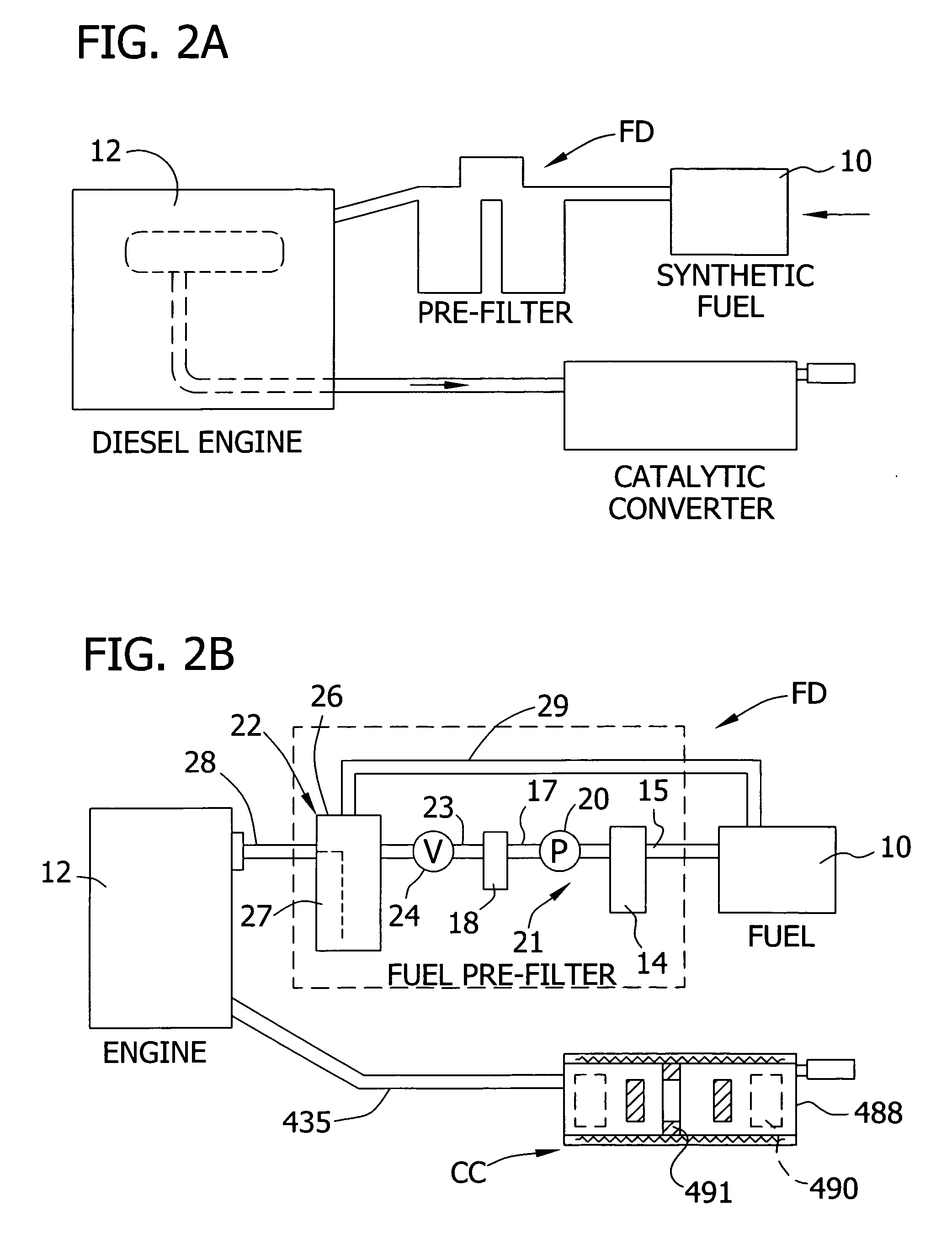Diesel emissions control system and method
- Summary
- Abstract
- Description
- Claims
- Application Information
AI Technical Summary
Benefits of technology
Problems solved by technology
Method used
Image
Examples
Embodiment Construction
[0032] Emission control systems of the prior invention will be more clearly understood with reference to the following definitions. DEFINITIONS:
[0033]“Synthetic Fuel” is used herein as a generic term identifying a class of diesel engine fuels that encompasses synthetic fuel blends and specified solvent fuels. Synthetic fuels are produced by processes, such as Fischer-Tropsch (F-T), for converting gas-to-liquid (GTL) or coal-to-liquid (CTL). The synthetic fuels of this invention are further characterized by a high Cetane number, and low sulfur(S), aromatics (A) and nitrogen (N) constituents resulting in a clean burning fuel having low PM emissions.
[0034]“Synthetic fuel blends” is used to identify a form of synthetic diesel fuel having a preponderance of synthesized components combined with a minor portion of a petroleum-derived constituent.
[0035]“Solvent fuels” is used herein to identify a group of products synthesized by F-T processes or the like and having the characteristics of...
PUM
| Property | Measurement | Unit |
|---|---|---|
| Fraction | aaaaa | aaaaa |
| Fraction | aaaaa | aaaaa |
| Fraction | aaaaa | aaaaa |
Abstract
Description
Claims
Application Information
 Login to View More
Login to View More - R&D
- Intellectual Property
- Life Sciences
- Materials
- Tech Scout
- Unparalleled Data Quality
- Higher Quality Content
- 60% Fewer Hallucinations
Browse by: Latest US Patents, China's latest patents, Technical Efficacy Thesaurus, Application Domain, Technology Topic, Popular Technical Reports.
© 2025 PatSnap. All rights reserved.Legal|Privacy policy|Modern Slavery Act Transparency Statement|Sitemap|About US| Contact US: help@patsnap.com



